The use of three-dimensional printing is no longer at its infancy, and as a result of this development, metal 3D printers are changing the way things are being done in manufacturing and prototyping. This handbook seeks to give you a full understanding of metal 3D printing from the basics to the types of metal 3D printers available, their applications and advantages. From an experienced engineer to someone working in manufacturing or just an enthusiast who wants to explore this innovative technology, this piece will enlighten them on everything related to metal 3D printing. The different methods used in metal 3D printing will be discussed; various materials that can be used in this process will also be highlighted together with practical applications across various industries, as well as future trends shaping this exciting field. Therefore, plunge yourself into it and let’s explore the potential revolution together.
How Does a Metal 3D Printer Work?
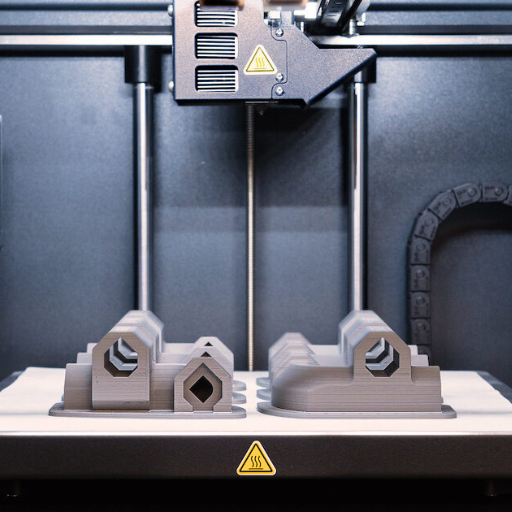
Image source: https://markforged.com/
Metal 3D printing is sometimes called additive manufacturing because objects are built by stacking layers on top of layers using computer files. Normally, these machines operate using processes such as SLM (Selective Laser Melting) or DMLS (Direct Metal Laser Sintering). Such technologies utilize powerful lasers for melting and bonding metallic powders during the entire building process. According to a digital model’s two-sectioned data format, laser melts powder selectively on the printer itself. As layers are formed consecutively across the build platform, more power is added time after time until completion of the whole procedure. Consequently, by using this detailed stepwise method metal parts are produced with high order intricacy while minimizing material wastage through superior accuracy level and customization related attributes.
What is Direct Metal Laser Sintering (DMLS)?
Additive manufacturing technique is called Direct Metal Laser Sintering (DMLS) that results in the creation of objects from metals powders. This procedure starts with a digital 3D model that is sliced into thin layers. These metal powder particles are subsequently joined by a laser, layer by layer, according to design during printing process. DMLS does not require molds or tools as opposed to traditional methods and it provides great precision enabling complex geometries and highly detailed parts to be made. It is employed in various industries such as aerospace, medical and automotive where customization, strength and durability are crucial.
What Are the Key Steps in the 3D Metal Printing Process?
To ensure accuracy and high quality production, the 3D metal printing process involves a number of essential stages. They are as follows:
- Design and Digital File Preparation: Start by making a detailed 3D digital model using CAD software and change this into an STL file which is suitable for 3D printing.
- Pre-processing: Slice the digital model into thin layers and add support structures if necessary. This also involves checking the position of the print to optimize build quality and minimize material usage.
- Machine Setup: The 3D printer is then set with all necessary parameters including; type of metal powder, layer thickness, laser power, scanning speed among others. The build platform is prepared for positioning.
- Powder Distribution: Using recoating mechanism, a thin layer of metallic powder is spread evenly on the build platform.
- Laser Sintering/Melting: Based on the sliced layer data, the printer laser selectively fuses individual particles of powder together in order to form a solid layer; here, the laser scans across a section melting powder to create one solid layer.
- Layer-by-Layer Construction: Herein, building platform lowers down after every other layer while new spread layer of powder until such time when whole object grows from its bottom side up.
- Cooling and Post-processing: After printing has finished, allow object plus any supports to cool down. Some post processing steps may include removal of excess powders, heat treatment operations as well as finishes used in obtaining desired properties like precision machining processes.
- Quality Control: To meet required specifications and quality standards final part is subjected to thorough inspection and testing. Dimensional checks can be done for instance or even tests such as structural tests or material analysis.
What Materials Can Be Used in a Metal 3D Printer?
Different metal powders can be used with metal 3D printers as they are flexible. When it comes to metals and applications, many factors come into play. The materials most commonly used include:
- Stainless Steel: This material is highly durable and resistant to corrosion hence its application differs widely from those in the medical industry like aerospace components.
- Titanium: It is popularly used in aerospace, automotive and medical industries due to its high strength-to-weight ratio and biocompatibility.
- Aluminum: It’s lightweight yet it has good mechanical properties which make it suitable for automotive parts, aerospace applications, and general prototyping.
- Cobalt-Chrome: This material is excellent for dental or orthopedic implants because of its great wear resistance and also corrosion resistance as well as being utilized in aerospace components.
- Nickel Alloys: These are useful in very hot situations and severe environments such as chemical processing industries, aero engines.
- Tool Steels: These are employed during the fabrication process of strong tools that will last long under tough conditions.
Each one of these materials has unique advantages that help produce high-quality, accurate and strong 3D printed metal parts.
What Are the Applications of Metal 3D Printing?
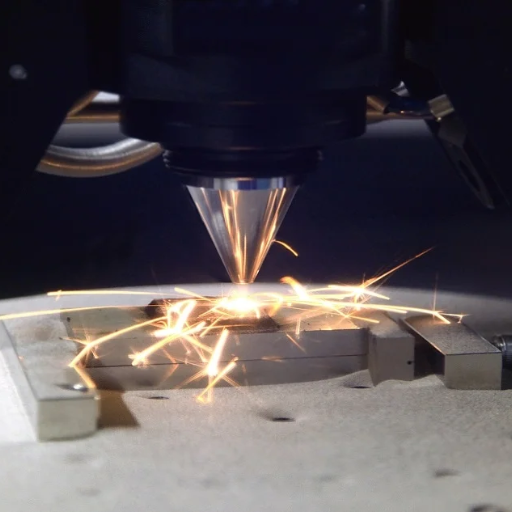
This is because metal 3D printing has various uses in many industries such as the production of complicated structures, which can be used to bring down excess material and time. Its use within aerospace enables for the manufacturing of light-weight parts having intricate designs that cannot usually be made with conventional methods. The medical field can produce patient-specific implants and prosthetics of greater fit and efficacy through the application of metal 3D printing. In the automotive industry this technology enables rapid prototyping, manufacture of custom parts thereby enhancing performance and reducing development cycles. Additionally, metal 3D printing is used in the manufacture of specialized tools and molds for manufacturing firms as well as producing strong components required in high temperature or corrosive environments like chemical processing or oil and gas industries.
How is 3D Metal Printing Used in Aerospace?
The aerospace sector has made a great progress through the 3D metal printing that produces light weight, resilient and high strength materials that are complicated in shape. It is employed to build some sections such as engine parts, brackets and fuel nozzles which have to be well engineered and composed of high performance materials. The use of Metal 3D printing minimizes the waste of substances used for production and decreases production times giving room for quick prototyping and rapid iteration of design. Additionally, it may be used to make consolidated components thus bringing down the number of assembly points which will help in reducing any probable failure points or even the overall mass hence improving fuel efficiency leading to reduced operational expenses.
What are the Applications in Automotive Industry?
The aerospace sector has made a great progress through the 3D metal printing that produces light weight, resilient and high strength materials that are complicated in shape. It is employed to build some sections such as engine parts, brackets and fuel nozzles which have to be well engineered and composed of high performance materials. The use of Metal 3D printing minimizes the waste of substances used for production and decreases production times giving room for quick prototyping and rapid iteration of design. Additionally, it may be used to make consolidated components thus bringing down the number of assembly points which will help in reducing any probable failure points or even the overall mass hence improving fuel efficiency leading to reduced operational expenses.
How is Metal 3D Printing Revolutionizing Medical Field?
The medical field is being transformed through metal 3D printing, making it possible to create implants and prosthetics that suit the needs of individual patients in terms of their anatomy thus achieving a better fit as well as improved patient outcomes. This technology enables production of high precision complex surgical instruments and guides, resulting in greater accuracy and efficiency during surgical procedures. On the other hand, rapid prototyping has been used in developing innovative medical devices thus reducing time-to-market and allowing for faster iterations based on clinical feedback. Furthermore, bioresorbable scaffolds can be produced using metal 3D printing which can encourage tissue regeneration and healing thereby opening new doors for regenerative medicine.
What Are Some Characteristics of Metal 3D Printing?
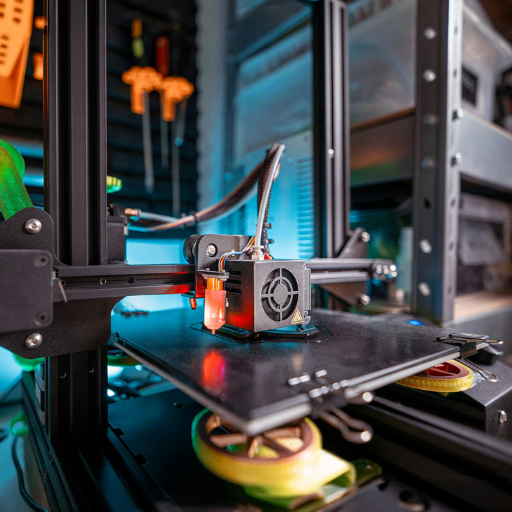
Metal 3D printing is known for its ability to create highly intricate and complex geometries that would be difficult or impossible using traditional manufacturing techniques. It has high precision and accuracy, making it possible to produce parts with tight tolerances. In addition, the technology is marked by materials efficiency owing to additive processes that create minimal waste. There are various metals and alloys available in metal 3D printing; thus, it can be used in different applications ranging from light weight aluminum to superalloys that withstand extreme conditions. Moreover, enabling quick iteration of designs and custom production of on-demand products makes it advantageous across several industries.
What Makes 3D Printed Parts Strong and Durable?
Strength and durability of 3D printed components derive from use of advanced materials, precise manufacturing methods coupled with careful finishing procedures. High quality metal powders and polymers are tailored specifically for the purpose of additive processing resulting into great mechanical properties as well as resistance against wear and corrosion. The layer-by-layer construction associated with 3D printing ensures high geometric accuracy throughout the entire process while advanced print technologies like selective laser melting (SLM)and electron beam melting (EBM) makes it possible for dense strong structures to be fabricated. Post-processes such as heat treatments, surface finishes, as well as quality inspections also improve the mechanical strength and lifespan of these parts.
How Does Laser Sintering Impact the Final Product?
The final product is greatly impacted by laser sintering in terms of strength, precision and material characteristics. It entails using a high intensity laser beam to melt or fuse small particles of materials commonly metals and polymers into a solid object. High resolution and complex geometries can be achieved with the use of precise control over the path of the laser which results in parts that have excellent dimensional accuracy as well as surface finish. Therefore, during rapid cooling and solidification that occurs during the process of laser sintering uniformity of material properties is observed while internal stresses are minimized thus improving mechanical performance. Also, through utilization of various materials such as custom blends it also becomes possible to come up with components designed for specific applications.
What are the Mechanical Properties of Metal 3D Printed Parts?
Mechanical properties of metal 3D printed parts differ greatly depending on the materials used and additive manufacturing processes employed. Usually, these pieces possess high tensile strength alongside hardness levels comparable to those made through traditional production means. Furthermore, fatigue resistance and ductility can be improved by carefully selecting materials used and subjected to post-processing such as heat treatment and hot isostatic pressing (HIP) thereby relieving internal stresses and enhancing structural integrity. Moreover, metal 3D printed parts often demonstrate excellent wear-ability together with good corrosion resistance making them suitable for demanding application areas like aerospace medical sectors automotive sectors among others.
What are the Best Metal 3D Printers to Consider?
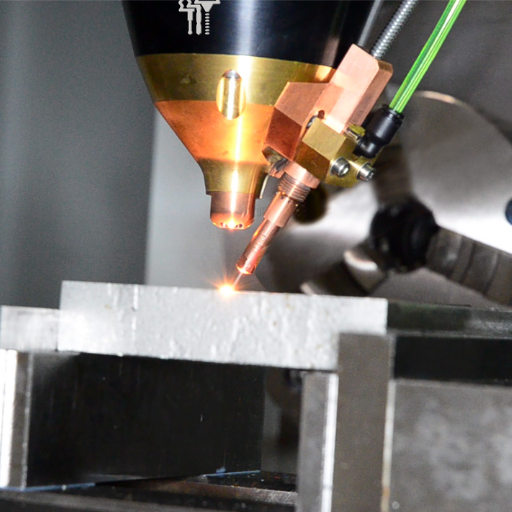
In selecting the best metal 3D printers, some of the models that standout are characterized by their capability, accuracy and flexibility.
- EOS M 290: A reliable printer known for its high quality outputs EOS M 290 has a Direct Metal Laser Sintering technology producing intricate and firm parts, therefore ideal for a wide range of industries.
- SLM Solutions 500: It features multiple laser options and offers good production rates which make it possible to manufacture large complicated components with excellent mechanical characteristics.
- Renishaw RenAM 500Q: It is designed as a high capacity system with quad laser system that improves speed without affecting final product quality.
- GE Additive Arcam EBM Spectra L: The electron beam melting technology allows this printer to be used in making large parts with integrity especially in aerospace sector or medical fields.
- Desktop Metal Studio System: This affordable printer, which is also suitable for offices, has been designed specifically to enable small-scale manufacturing and prototyping whilst taking into consideration cost factors which are important at this stage of development.
These printers excel in different fields; thus choosing them largely depends on specific needs and requirements during production.
What are the Top Markforged Models?
Markforged, a company that is acknowledged for their production of well-designed high end models that combine durability with precision and are simple to operate:
- Markforged Metal X: An Atomic Diffusion Additive Manufacturing (ADAM) technology has been used by this 3D printer which allows it to make metal parts with high quality. It has the ability to print in various metals including stainless steel, tool steel, and inconel hence it can be tailored for different industrial applications.
- Markforged Mark Two: Mark Two has been praised for its capacity to reinforce parts using continuous carbon fiber strands as well as Kevlar and fiberglass making it possible to make very strong composite pieces. This printer is ideally suited for engineering or manufacturing environments where robust prototypes or end use parts are needed.
- Markforged X7: The industrial grade Multi-material Composite Printer utilizes Continuous Fiber Reinforcement (CFR) Technology that produces extremely strong parts with high strength-to-weight ratios. It is excellent at producing functional prototypes, tools and fixtures ensuring fast production rates coupled with superior mechanical properties.
These Markforged models come with cutting-edge technologies and capability to manufacture durable yet highly functional parts across several sectors.
Is the Metal X Printer Right for You?
The Metal X printer from Markforged is the right choice for businesses that want to enter metal 3D printing at a low cost while maintaining product quality. This is the best machine to create functional metallic prototypes, tooling and small batch production runs. The Metal X has been ranked highly for its easy-to-use software, dependable manufacturing processes, and being able to print with diverse metals such as stainless steel, tool steel, and Inconel by leading industry sites. However, if you are seeking large-scale production capabilities, it may not be an ideal option because of its slower printing speeds compared with traditional manufacturing processes. The Metal X strikes what we consider the perfect balance between performance and cost when you need light but strong, intricate metal pieces that are highly accurate.
What Makes EOS a Leader in the Industry?
EOS (Electro Optical Systems) stands apart in the 3D printing arena on account of its trailblazing technology, unparalleled expertise and all-inclusive services available. As a worldwide leader in industrial 3D printing solutions,EOS offers advanced additive-manufacturing machines based on both metal and polymer materials – notable for their reliability and precision. Constant research & development by EOS ensures innovative solutions that guarantee high-quality production standards are maintained throughout the company’s activities. Furthermore,EOS also provides extensive support to customers including training and consulting services that help them effectively incorporate these technologies into their existing production workflows.The reliability, consistent performance as well as an unwavering commitment to technological advancement makes EOS preferable among industries seeking robust and scalable additive manufacturing solutions.
How Can You Achieve Affordable Metal 3D Printing?
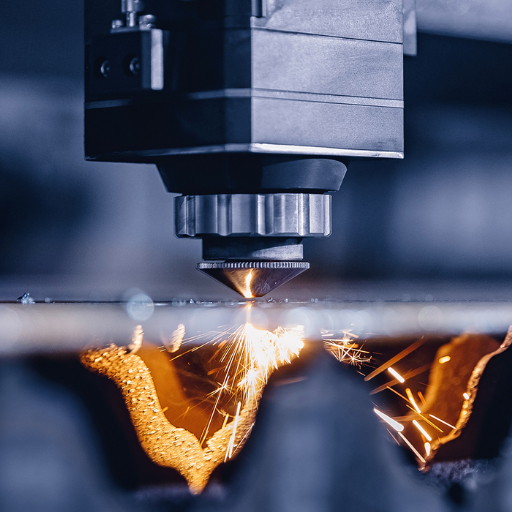
A strategic approach to affordable metal 3D printing involves balancing initial investment, long-term operational costs, and the needs of applications. Start by choosing the right 3D printer that aligns with your production volume and material requirements; options like the Metal X provide a cost-effective entry point for low to mid-volume production. Optimize your design for additive manufacturing to reduce material usage and minimize post-processing. Additionally, leveraging simulants for prototypes and verifying designs before full-scale production can significantly cut costs. Lastly, explore partnerships or service bureaus to take advantage of their expertise and resources without the hefty upfront investment in equipment.
What are the Costs Associated with Metal 3D Printers?
The costs associated with metal 3D printers can vary widely depending on several factors such as machine abilities, materials, and expenses related to operations. Entry-level metal 3D printers like the Metal X start around $100,000, offering a relatively affordable solution for small to mid-volume production needs. More advanced industrial-grade systems, such as those from EOS and GE Additive, can reach costs upwards of $500,000 to over $1 million reflecting higher speed per unit time throughputs; more precision; wider compatibility with different materials among others. In addition to the purchase price other factors that continue accruing include maintenance fees power consumption cost among others which could be about Kshs50-150 per kilogram on materials plus any subsequent post processing equipment used in this process leading up-to its completion . Taking care of all these is crucial in order that when one decides into buying a 3dp system all aspects are included in total cost ownership calculation for better decision making regarding whether it’s worth purchasing or not as far as costs are concerned?
How to Save on Metal 3D Printing Material?
In order to save on the materials used in 3D printing for metal, one must consider smart designing, material selection as well as process optimization. One way to do this is by making such a design that can be processed additively. By so doing, it becomes possible to use less material in a part without negatively affecting its quality and performance. This may be done through addition of lattice structures, hollowing out non-essential areas, and minimizing support structures. Alternatively, you could explore hybrid manufacturing where additive manufacturing is limited to critical parts while the remaining are made traditionally; this will reduce the cost of the whole project. Furthermore, there could be savings if we use cost-effective materials such as steel or aluminum instead of expensive special alloys recyclable that are commonly cheaper than other alloys typically used here. Reducing material cost may also involve recycling leftover powders from previous prints. Working with experienced service bureaus can lead to economies of scale when purchasing bulk materials and improved handling systems thus reducing costs even further.
Are There Affordable Metal 3D Printing Services Available?
For different budgets, there are some affordable metal 3D printing services on the market. Shapeways is one of the best ones because of its competitive pricing using a pricing calculator, which allows users to have an idea about project costs prior to their finalization. Another service worth mentioning is Xometry that gets quotes immediately and offers cheaper options through leveraging a network of authorized manufacturing partners. Moreover, Protolabs has maintained its cost effectiveness and quick production time with a transparent pricing structure that helps customers in managing their expenditures efficiently. All these providers present multiple materials as well as finishes addressing diverse project demands hence making it easy to venture into metal 3D printing.
Frequently Asked Questions (FAQs)
Q: What is metal 3D printing and how does it differ from traditional manufacturing?
A: Metal 3D printing, also known as metal additive manufacturing, is a process where metal components are created layer by layer using a metal printer. It differs from traditional manufacturing, which typically involves subtracting material from a solid block through machining or casting. The 3d printing process can produce complex geometries that are impossible to achieve with traditional methods.
Q: What are the most common metals used in metal 3D printing?
A: The most common metals used in the metal 3d printing process include stainless steel, aluminum, titanium, tool steel, and nickel-based alloys like inconel. These materials are chosen for their strength, durability, and resistance to high temperatures.
Q: What is the difference between metal filament and metal injection molding in 3D printing?
A: Metal filament is used in a metal 3d printing system to create parts through a process similar to polymer 3D printing. Metal injection molding, on the other hand, involves mixing metal powders with a binder to form a feedstock, which is then injected into a mold and sintered to produce metal parts. Metal injection molding is typically used for high-volume production, while filament-based 3D printing is suitable for smaller runs and complex designs.
Q: Can metal 3D printers be used to produce prototypes and production parts?
A: Yes, metal 3D printers are highly versatile and can be used to create both prototypes and production parts. Metal additive manufacturing allows for rapid prototyping, enabling designers to iterate quickly. For production, it can efficiently produce low to medium volumes of high-quality metal components.
Q: How does the metal 3D printing process work?
A: The metal 3D printing process typically involves several steps: designing the part using CAD software, slicing the design into layers, feeding metal powder or filament into the printer, and then sintering or melting each layer with a laser or electron beam. The process can vary slightly depending on the type of metal printer and the specific technique used, such as metal binder jet, SLS 3D, or eos metal 3d systems.
Q: What are the advantages of metal 3D printing over polymer 3D printing?
A: Metal 3D printing offers several advantages over polymer 3D printing. It can produce stronger, more durable parts capable of withstanding high temperatures and harsh environments. Metal 3D printing also allows for the creation of functional metal components that can be used in industrial applications, whereas polymer 3D printing is often limited to prototypes and non-functional parts.
Q: How does 3D printing with metal compare to industrial metal 3D printing systems?
A: 3D printing with metal at a consumer level is generally limited to smaller, less complex parts due to the constraints of desktop metal printers. Industrial metal 3D printing systems, like the Metal X system, offer higher precision, larger build volumes, and the ability to produce complex geometries with high-quality finishes. These systems are often used in industries such as aerospace, automotive, and medical for producing critical components.
Q: What are some of the applications of metal 3D printing?
A: Metal 3D printing is used in a wide range of applications, including aerospace components, automotive parts, medical implants, and custom tools. It is particularly valuable in creating complex geometries, lightweight structures, and parts that require high strength and temperature resistance. The ability to rapidly prototype and produce bespoke solutions makes it a powerful tool in many industries.
Q: What are the challenges of metal 3D printing?
A: Some challenges of metal 3D printing include the high cost of metal powders and printers, the technical complexity of the process, and the need for post-processing to achieve the desired finish and mechanical properties. Additionally, ensuring consistency and quality can be challenging, especially for high-precision or safety-critical applications.





